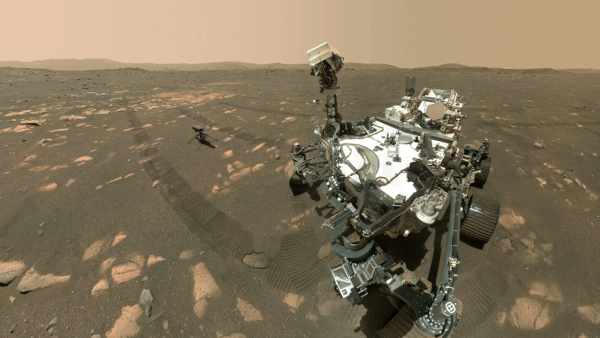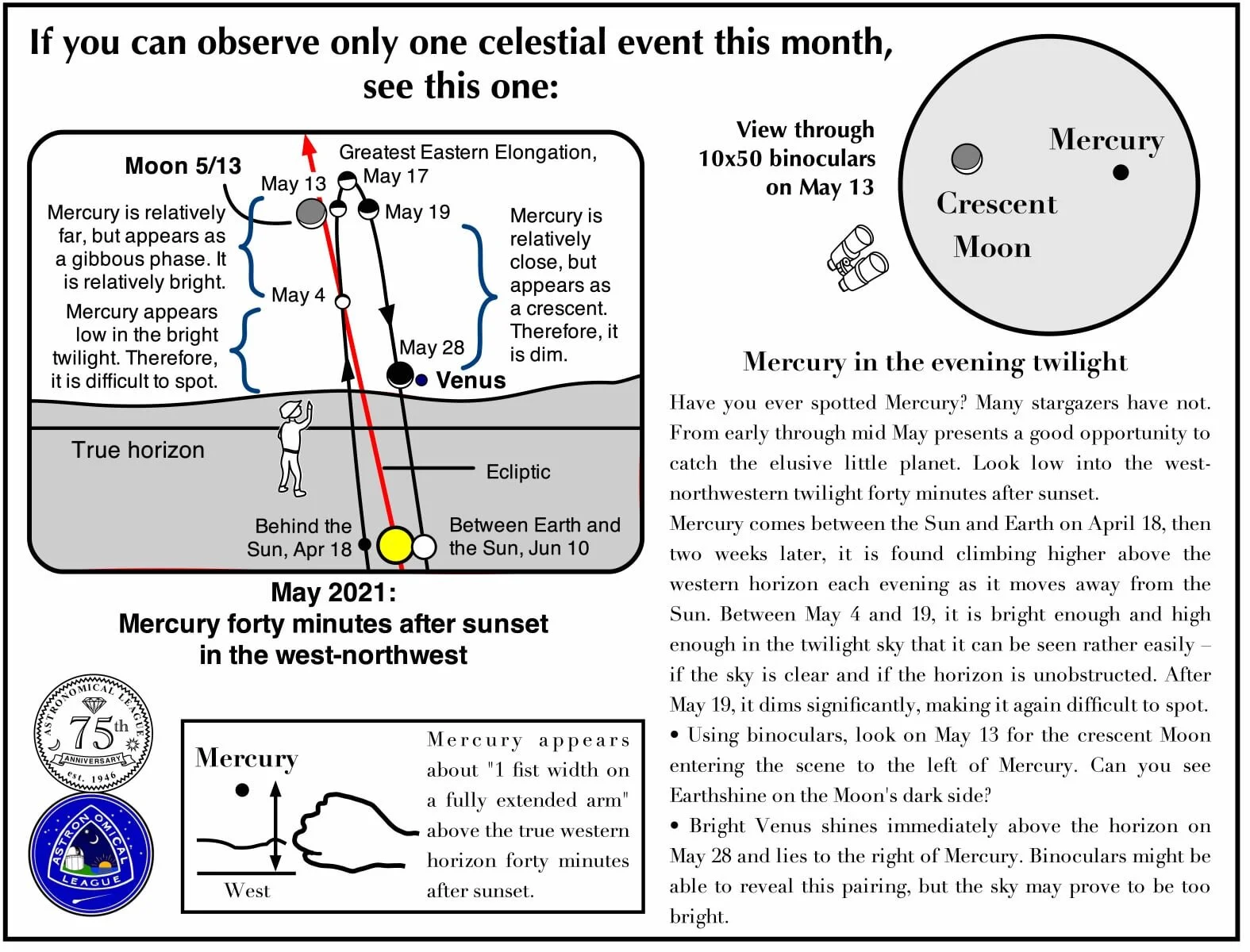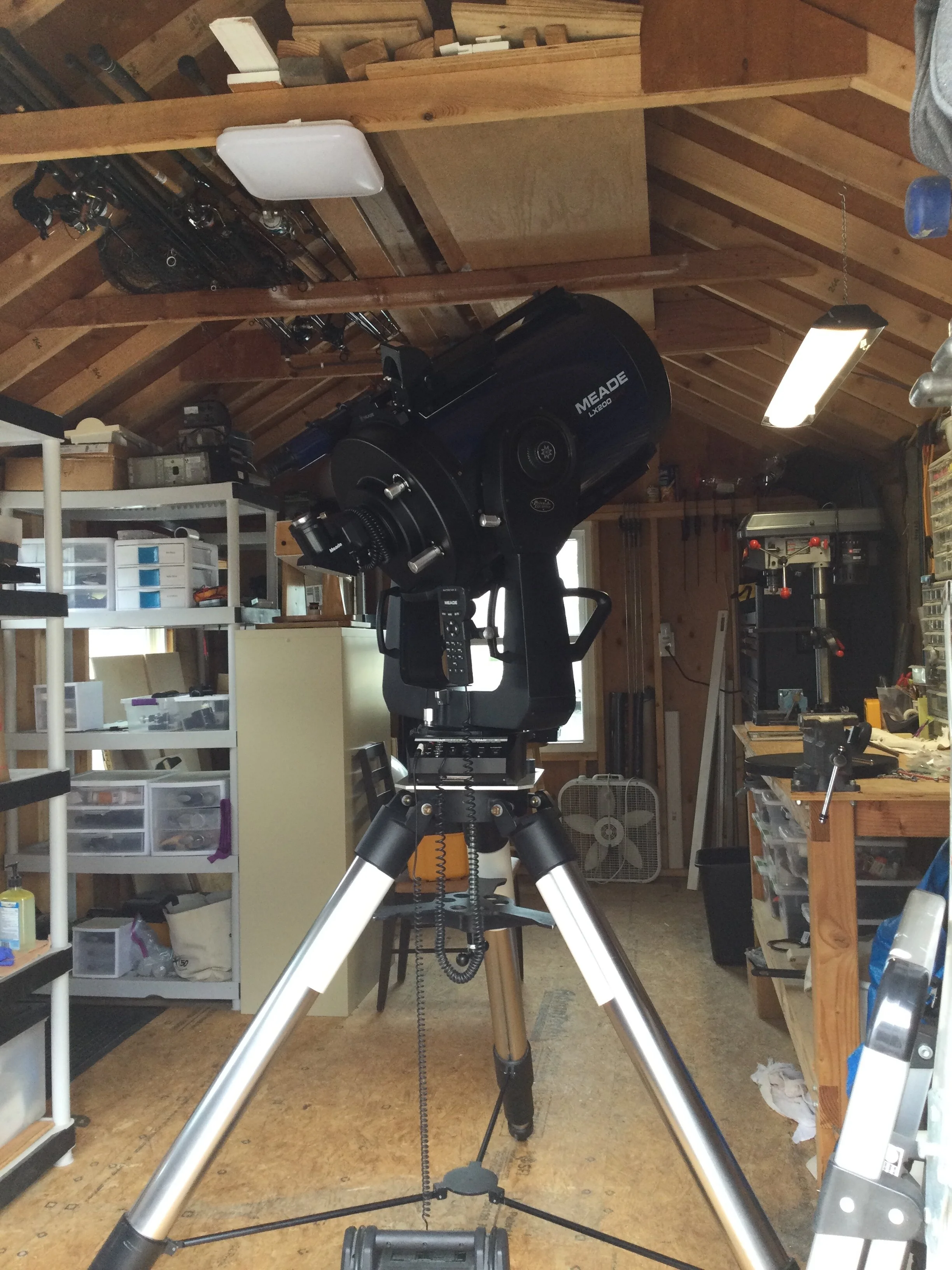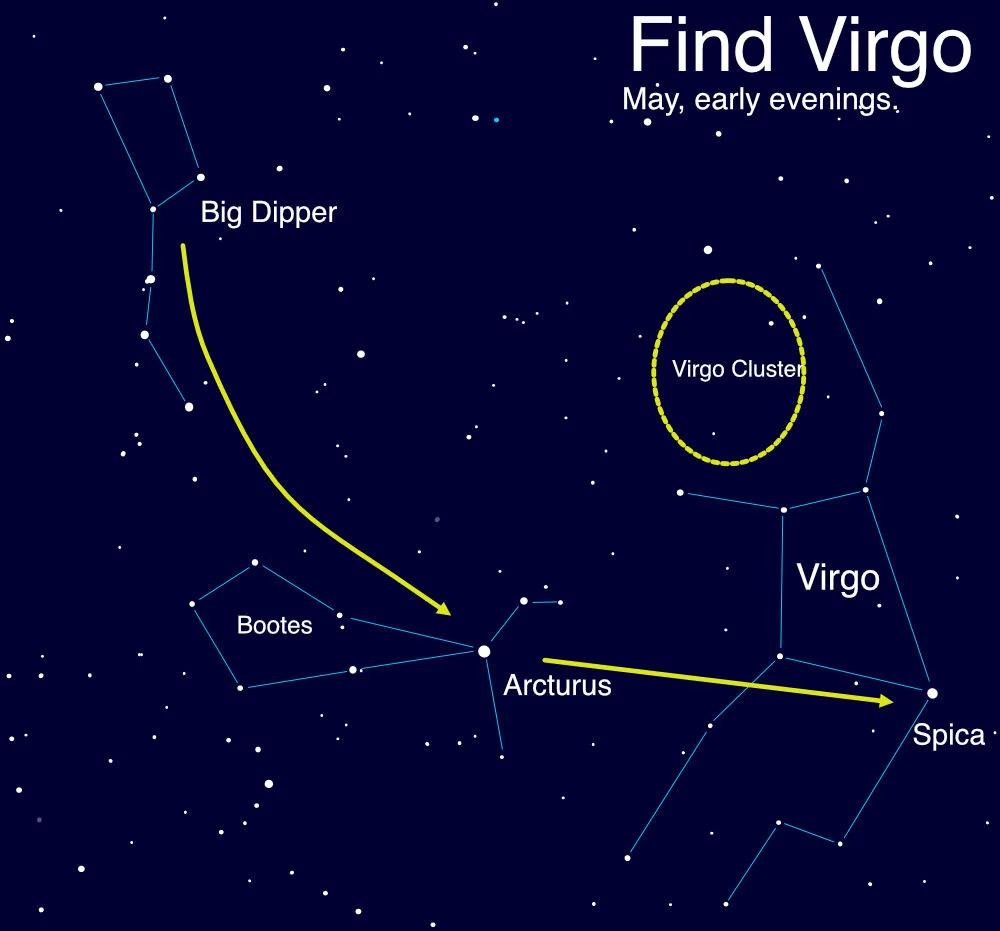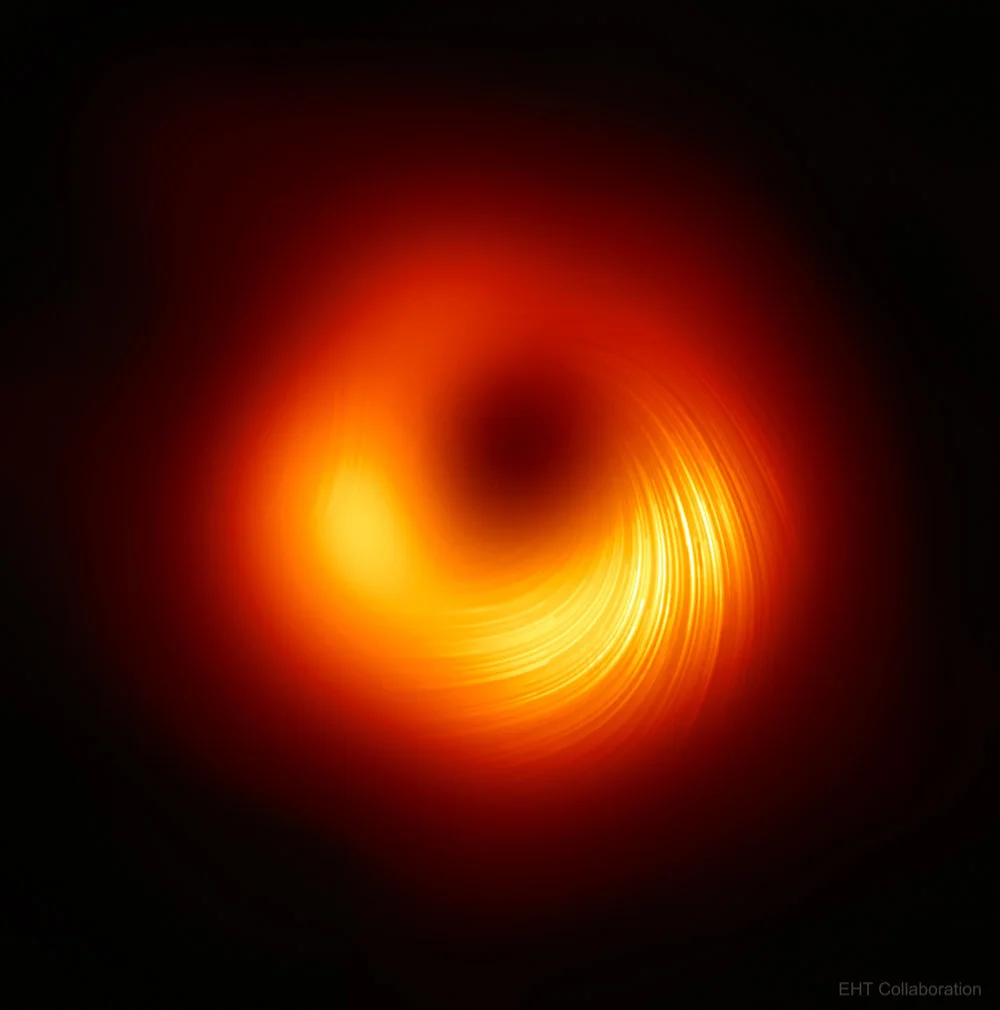Astral Projections Online May 2021
ASTRA held its virtual club meeting on April 9, 2021. We will continue the virtual meetings via Zoom during COVID. If you can’t participate because of issues with Zoom please contact us.
Club dues and 2021 membership. Returning members should have renewed by now. If you renew after March 31 you will be renewed as a new member. NOTE: Those members that paid for 2020 will be carried over to 2021 and should have already been notified.
Please check our Website for updated content at www.astra-nj.com
Club Presentations Wanted:
Anyone have any astronomy items of interest to share with the membership?
Please let us know at Club Contacts.
ASTRAL PROJECTIONS ONLINE (APO for short) is an email-linked publication for members only. If you exit APO to the club website or other resources you will need to use the emailed link again to get back to it. If you wish to retain a copy please bookmark or refer back to the email. We will make all efforts to post by the first week of the month.
Submissions Welcome: Members are invited to submit articles, photos, news, or stories for inclusion with Astral Projections Online. Please contact the ASTRA Webmaster.
Event Calendar
ASTRA’s next virtual meeting is on Friday, May 14, 2021, at 7 PM.
Please note at this time future in-person events will be canceled for the duration of the Coronavirus / CONVID-19.
Please check your emails for updates.
EVENT Cancellations: Members will receive email notification of an event cancellation, or call the ASTRA Hotline: 609-971-3331
Partial Solar Eclipse on June 10 at sunrise. More information in APO below and for discussion at May 14 meeting.
Website Updates …
Please visit our club website. We continue to have additional updates, if there is some content that would be useful to members please let us know.
"The purpose of life is the investigation of the Sun, the Moon, and the heavens."
- Anaxagoras, Philosopher
The April virtual club meeting on April 9, had some excellent participation, along with questions throughout for our guest speaker’s presentation. For this months’ APO we will expand more on the subject of radio astronomy.
Club Virtual Meeting - Radio Telescopes 101 - Guest Speaker: Kevin Lloyd
Guest Speaker: Kevin Lloyd
Kevin Lloyd provided a virtual presentation to the ASTRA membership at our April 9 meeting, all the way from Colorado. His presentation was an introductory level presentation on Radio Telescopes.
Kevin has been building and working with Radio Telescopes for the last ten years. He has no special training in Radio Telescopes and no advanced degrees. You only need to understand some key concepts and you’re on your way.
There are three basic components to a radio telescope. A receiver, antenna, and a recording device. There is nothing complicated about radio telescopes once you understand how to apply the basic concepts. Think of radio as an instrument that takes frequencies beyond your ability to hear and brings them down into the audible frequency range that you can listen to.
APO Editor Note: I could not attach the audio files from the presentation and substituted some below from YouTube. Sounds from our Solar System from RED SIDE - All Planet Sounds From Space (In our Solar System)
Listen to the Sounds of the Sun from NASA.
Receivers
The cheapest and most effective way to build a radio telescope is to use a Software Defined Radio (SDR) and an RTL 2832 dongle (RTL-SDR). There are several free SDRs available on the internet and the dongle can be priced between $20 to $100 plus dollars.
A dongle is an adapter that can have one or more ports built into it, allowing you to plug one or more devices into your computer at the same time.
The dongle takes the place of the receiver hardware. It receives the radio signal and converts them into a digital stream of 1’s and 0’s that the SDR interprets and extracts the signal from the carrier and sends the output to the sound card on a computer.
Are SDRs legal? The short answer is yes, as long as it is an RTL-SDR in which scanner laws would apply to an RTL-SDR. It is a receiver-only component. As long as you don't go around sharing information gained from the radio, or decrypt encrypted communications that are not meant for you, you will be fine.
Antennas
The purpose of an antenna is to help amplify a range of frequencies. It works best if it matches the wavelength of the frequency. There are many types of antennas: Vertical (Spiral or Whip), Dipole (Rabbit Ears), Yagi, Parabolic, and Loop. The Parabolic antenna is generally the most recognizable of the radio astronomy antenna.
Recorder
The recorder performs the same job as the camera does in optical astronomy – it records the data (noise level) from the receiver and presents it graphically.
Radio-SkyPipe software uses the input from your sound card/microphone and graphs the level of input and is a fully functional strip chart recorder.
There are several versions of Radio-SkyPipe, the free version having no time limits and can be used with your own setup or with a remote unit.
The father of radio astronomy, Karl Jansky.
Karl Jansky was an American physicist and radio engineer from Red Bank, New Jersey. He was working for Bell Labs investigating sources of static that might interfere with radio voice transmissions. In 1931 he discovered that one of the static sources was radio waves emanating from the Milky Way galaxy.
In honor of Jansky’s epoch-making discovery, the unit of radio-wave emission strength was named the jansky.
APO Editor’s Note: For more on Karl Jansky check out YouTube and roadsideamerica.com.
Karl’s Dipole antenna. He had to build all the equipment he used so that he could track down sources of radio static, inventing radio astronomy in the process.
A large directional antenna system mounted on a turntable that rotated about a central vertical axis, riding on a circular track on the wheels of a Model-T Ford. It was dubbed “Jansky’s merry-go-round.”
The above diagram is a sample radio telescope setup. You must be careful about the output level of your radio. If it is too high for the microphone input, the level gets distorted and increases in noise amplitude are missed. Think of someone who shouts into a microphone and how distorted that gets. Adjust the microphone input and the radio output so that neither of them are a maximum.
Some potential projects:
Decametric Radio Noise from Jupiter – Research the Radio Jove project.
Radio emissions from the Sun.
Counting meteors during a meteor shower.
Cataloging the frequencies emanating from the center of the galaxy -- radio noise was discovered at 20.5 mhz.
Coordinated optical observations of Jupiter with the decametric radio noise.
You can find more of Kevin Lloyd’s full presentation with additional items that were not discussed in this summary from April 9 on ASTRA YouTube. A PDF file is also available with links that can take you to the items that were discussed. PDF file
I would like to thank Kevin for putting this presentation together for the ASTRA membership and commend him for a job well done with his first-ever radio telescope presentation. We hope to hear from Kevin again in the future.
Website of Interest added to the club tools page - Society of Amateur Radio Astronomers
Sunrise Solar Eclipse - June 10
Something to discuss at our virtual club meeting on May 14. The first solar eclipse viewable from North America since 2017, will be viewable along the Jersey Shore early Thursday morning on June 10. Make sure your alarm clock is properly set so you won't miss it.
The image is an extraction from Stellarium.
The partial solar eclipse will look like a crescent sun or “Sunrise Scimitar” will be at the start of sunrise at 5:24 AM. Sunrise coinciding with the peak of a solar eclipse is a rather rare occurrence; for our area. This has happened only twice in the last 150 years: in Sept. 1875 and October 1959.
As always with a solar eclipse, proper precautions are needed. Sky & Telescope has provided helpful advice on the safest methods to watch a partial solar eclipse. You can review that information here: https://tinyurl.com/y2xpjdxd
The Bell Labs Horn Antenna
The horn antenna at the old Bell Telephone Laboratories in Holmdel, New Jersey, constructed in 1959 to support Project Echo, the National Aeronautics and Space Administration's passive communications satellites, used large aluminized plastic balloons as reflectors to bounce radio signals from one point on the Earth to another.
A large microwave horn antenna, it was used as a satellite communication antenna and radio telescope during the 1960s. It was designated a National Historic Landmark in 1988 because of its association with the research work of two radio astronomers, Arno Penzias and Robert Wilson. In 1965 while using this antenna, Penzias and Wilson discovered the cosmic microwave background radiation (CMBR) that permeates the universe. In 1978 Penzias and Wilson received the Nobel Prize for Physics for their discovery.
Information and image, sourced from Wikipedia.
Wikipedia - The Horn Antenna located in Holmdel Township, New Jersey
Nokia Bell Labs - Learning about how the universe was born: The story of the Horn Antenna
Ingenuity takes historic flight
The Ingenuity helicopter has completed its first flight on Mars on April 19, 2021.
See the first image and video by NASA from the flight, linked here to Space.com
A full 57-second video of the entire first flight from NASA JPL.
Since the initial flight on April 19, Ingenuity has made several more and has started taking in-flight images.
Perseverance Makes Oxygen on Mars
NASA’s Perseverance Mars rover took a selfie with the Ingenuity helicopter, seen here about 13 feet (3.9 meters) from the rover. on April 6, 2021. (Image credit: NASA/JPL-Caltech/MSSS).
On April 20, the Perseverance rover made another first on Mars, one that may help pave the way for astronauts to explore the Red Planet someday. The rover successfully used its MOXIE instrument to generate oxygen from the thin carbon dioxide Martian atmosphere. MOXIE = “Mars Oxygen In-Situ Resource Utilization Experiment.”
For more check out the article from Space.com
The following article and images are from the National Radio Astronomy Observatory.
The Basics - The Science of Radio Astronomy
What is Radio Astronomy?
Astronomers around the world use radio telescopes to observe the naturally occurring radio waves that come from stars, planets, galaxies, clouds of dust, and molecules of gas. Most of us are familiar with visible-light astronomy and what it reveals about these objects. Visible ” light — also known as optical light — is what we see with our eyes, however, visible light doesn’t tell the whole story about an object. To get a complete understanding of a distant quasar or a planet, for example, astronomers study it in as many wavelengths as possible, including the radio range.
Visible Light - The wavelengths of electromagnetic radiation that are visible to the naked eye.
Quasar - An apparently small (at least to observers on Earth) yet immensely powerful cosmic object. Some quasars (quasi-stellar objects, or QSOs) are strong radio sources. radio-emitting quasars were the first to be discovered. These are some of the most distant objects in the Universe and are believed to be fueled by supermassive black holes residing in ancient galaxies.
The W50 “Manatee” Nebula shown in visible light (Left) and visible + radio light (Right)
There’s a hidden universe out there, radiating at wavelengths and frequencies we can’t see with our eyes. Each object in the cosmos gives off unique patterns of radio emissions that allow astronomers to get the whole picture of a distant object. Radio astronomers study emissions from gas giant planets, blasts from the hearts of galaxies, or even precisely ticking signals from a dying star.
Today, radio astronomy is a major branch of astronomy and reveals otherwise-hidden characteristics of everything in the universe.
What ARE Radio Waves?
Our eyes are built to see the cosmos in visible light. However, objects in the universe radiate many other types of light, across what’s called the “electromagnetic spectrum”. Light travels through space in waves, like ripples in a pond. Each ripple has a peak and a trough, which is called a cycle. An object emitting radio waves give off many cycles in a very short period of time. During each cycle, the wave moves a short distance, which is called its wavelength.
ALMA Observes the Invisible Universe - With colorful artwork and clever animations, the linked short videos delve into topics that explain the fundamentals of radio astronomy.
Radio Frequencies and Astronomy by the Numbers
For radio waves of all kinds, the number of cycles per second is called a frequency. One cycle per second is called one hertz. A thousand cycles per second is a kilohertz; a gigahertz is a billion cycles per second. Radio astronomers are most interested in objects that emit in the frequency range between 3 kilohertz and about 900 gigahertz. It’s easier to think of these in terms of wavelengths, however, which range from a very large 100-kilometer radio wave to those less than a millimeter in length.
Frequency - A measure of wave vibrations per unit time. Typically measured in hertz, or cycles per second. In radio astronomy, high frequency corresponds to shorter wavelengths, like submillimeter waves detected by ALMA. Lower frequency refers to longer waves, like centimeter waves detected by the VLA.
Hertz - A unit of measurement of a wave's frequency. Hertz is measured by the number of oscillations that occur per second. 1 Hertz (Hz) = 1 cycle or oscillation/second.
Doing Radio Astronomy
The radio portion of the electromagnetic spectrum can come from energetic objects and processes in the universe as well as cold, dark objects that emit no visible light. Because different wavelengths are given off by different objects, radio astronomers use a variety of methods and instruments to detect them.
Image: VLA image of the radio emissions coming from the location where two neutron stars collided and generated gravitational waves. The emission from the collision site is the middle object in this image.
One type of instrument is a large antenna that looks similar to a satellite TV dish. It’s called a radio telescope. While single-dish radio telescopes are essential, NRAO’s telescopes consist of many dishes linked together in giant arrays to gather detailed radio images of distant objects.
Since humans are a visual species, seeing or “imaging” is an important part of all astronomy, regardless of the type of light being studied. While radio telescopes don’t take pictures in the same way that visible-light telescopes do, the radio signals they detect are converted into data that can be used to make images. Radio astronomy data streams are brought together and processed in a supercomputer. The output can be turned into images that are colored in different ways to show characteristics of the object such as its temperature, “clumpiness”, or the strength of radio emissions from different regions. The resulting images let scientists and the public see the otherwise invisible radio objects.
Animation of Neutron Star Merger and Aftermath - Animation of the merger of two neutron stars. As the two bodies draw closer together, they circle each other hundreds of times each second until they eventually collide, producing a tremendous explosion and an expanding shell of debris.
Want to learn more? Continue with the series of articles and reviews from The National Radio Astronomy Observatory.
Next up on their website is The Basics - The Technology of Radio Astronomy.
The Basics - The Science of Radio Astronomy
The Basics - The Technology of Radio Astronomy
The Basics - The History of Radio Astronomy
Added to our club saved YouTube links
How radio telescopes show us unseen galaxies.
by Natasha Hurley Walker - TED Talks
Outreach material below is distributed free for public outreach.
Club Proposal To Detect Meteors
For those with radio astronomy interest or someone thinking about it. When we have the potential for a good meteor shower maybe we can set up to record any detectable meteor transit via radio. While doing this I can have the AllSky Camera running at the same location and time. We would need to have someone already equipped for detecting and recording meteors via radio or for making the needed portable setup. Would be interesting if we can synchronize the output of the two and create a shared video project. Worst case it would be a good night out in trying something scientific like this and would make for some interesting club discussions.
If there is any interest, let Jim Webster know.
Equipment used by Reddit user Maxworm to detect Perseids meteors using the Graves radar: Dipole, LNA, Bias-Tee, and RTL-SDR. Article for this setup can be found at RTL-SDR.COM
With the right equipment (and location) you can detect meteors with an RTL-SDR dongle and appropriate antenna. When a meteor enters the atmosphere it leaves behind a brief trail of ionized air which is highly reflective to RF signals. These trails can reflect carrier waves from distant transmitters towards your antenna, allowing you to detect a meteor entering the atmosphere. This is called meteor scatter.
Meteor detected by MaxWorm
AllSky Camera
If there is an interest in tracking meteors overnight the AllSky Camera from AllSky Optics is one such device that can perform this function. It can be mounted on a building or on a tripod to make it a portable device that can be used for star parties or presentations.
APO Editors Note: The camera is made and coming in from the UK.
For more on the AllSky Camera visit their links:
Facebook
Webpage
Image source from AllSky Optics.
Triple Simultaneous meteor detection using Graves radar. Blog Article and YouTube of recording.
Skylapser YouTube Video
All-Skylapse from the Cielito Azul Observatory near Tres Piedras, in Taos County New Mexico. Camera gear: Lumix GH3, 4mm circular fisheye, F2.8 ISO 6400 25 sec. exposure, 30 sec. interval, rendered at 15 frames per second. YouTube
On the lighter side of astronomy …
Astronomy Cartoons a Facebook group dedicated to sharing some fun astronomy and space jokes, memes and cartoons.
Posted with permission from Abigail Bollenback. Abigail is a rising star in the astronomy community. An Explore Alliance Ambassador at Explorer Scientific, USA. She is also a host and writer for Astronomy Magazine’s Youtube channel, Infinity and Beyond.
APO Editor’s Note: Starting with the May issue of APO “On the lighter side of astronomy” will be posted monthly.
ASTRA Member Astrophotos
NGC2403
By Ron Bernknopf - April 10
This is Galaxy NGC2403. It is better than last years' attempt. This one is "fairly" close at 8 million light years away. It’s an intermediate spiral galaxy in the constellation Camelopardalis. It is an outlying member of the M81 Group.
The Moon
By Ron Bernknopf - April 25
Tonight's Moon (4/25/21). She is 97.9 full. This is shot using my summer telescope (Meade ETX-90) and my Canon T6 DSLR. 80 exposures 1/250 seconds and ISO 400. I like this telescope for moon and planets. I hope you enjoy the picture. The photos were stacked using Registax6 and processed using Gimp software.
Triangulum Galaxy - M33
By Ron Bernknopf - April 27
What do you do with some downtime when your not imaging? Mess around with old data.
This is Messier 33, the Triangulum Galaxy, taken in November 2020. M33 is a member of our "local group" of galaxies including the Milky Way, Andromeda, and others. It is a little over 1/2 the size of the Milky Way and is located 2.7 million light-years away.
Members Telescope for Sale Meade 12'“ LX200 - Asking $2200.00
Includes:
Meade Large tripod and custom mounting plate
Meade Superwedge
Meade 8x50 optical finder
Meade Electric Focuser
Meade 2” diagonal mirror
Meade Autostar hand controller, V4.2g
Telrad with dew shield
Bahtinov mask
Petersen Engineering add-ons:
EZ-Focus
EZ-Grip handles
EZ-DEC Clutch
Eye Opener II, 2” Visual Back
3” Dovetail Rails top and bottom
Counterweights
Kendrick Dew Strap for 12” scope
Kydex dew shield
Thermal Wrap cover
This scope has been very well maintained, has always had excellent go-to locating sky objects, and has very little mirror flop. According to Meade Customer Service, this is one of the last scopes (S/N 06917) of this type that was manufactured in the U.S. I am the original and only owner.
John Deriso
olgazer@cgullz.com
Please note: ASTRA is not responsible for the sale of the member items and is only listed as a courtesy. All responsibility for the sale of listed items is the responsibility of the seller only.
For more go to NASA Jet Propulsion Laboratory webpage: What’s Up: Skywatching Tips From NASA
This article and images are distributed by NASA Night Sky Network
The Night Sky Network program supports astronomy clubs across the USA dedicated to astronomy outreach.
Visit nightsky.jpl.nasa.gov to find local clubs, events, and more!
Virgo’s Galactic Harvest
David Prosper
May is a good month for fans of galaxies, since the constellation Virgo is up after sunset and for most of the night, following Leo across the night sky. Featured in some ancient societies as a goddess of agriculture and fertility, Virgo offers a bounty of galaxies as its celestial harvest for curious stargazers and professional astronomers alike.
Virgo is the second-largest constellation and largest in the Zodiac and easily spotted once you know how to spot Spica, its brightest star. How can you find it? Look to the North and start with the Big Dipper! Follow the general curve of the Dipper’s handle away from its “ladle” and towards the bright orange-red star Arcturus, in Boötes – and from there continue straight until you meet the next bright star, Spica! This particular star-hopping trick is summed up by the famous phrase, “arc to Arcturus, and spike to Spica.”
This large constellation is home to the Virgo Cluster, a massive group of galaxies. While the individual stars in Virgo are a part of our own galaxy, known as the Milky Way, the Virgo Cluster’s members exist far beyond our own galaxy’s borders. Teeming with around 2,000 known members, this massive group of galaxies are all gravitationally bound to each other, and are themselves members of the even larger Virgo Supercluster of galaxies, a sort of “super-group” made up of groups of galaxies.
Find Virgo by “arcing to Arcturus, then spiking on to Spica.” Please note that in this illustration, the location of the Virgo Cluster is approximate - the borders are not exact.
Our own Milky Way is a member of the “Local Group” of galaxies, which in turn is also a member of the Virgo Supercluster! In a sense, when we gaze upon the galaxies of the Virgo Cluster, we are looking at some of our most distant cosmic neighbors. At an average distance of over 65 million light-years away, the light from these galaxies first started towards our planet when the dinosaurs were enjoying their last moments as Earth’s dominant land animals! Dark clear skies and a telescope with a mirror of six inches or more will reveal many of the cluster’s brightest and largest members, and it lends itself well to stunning astrophotos.
Virgo is naturally hosting numerous studies of galaxies and cosmological research, which have revealed much about the structure of our universe and the evolution of stars and galaxies. The “Universe of Galaxies” activity can help you visualize the scale of the universe, starting with our home in the Milky Way Galaxy before heading out to the Local Group, Virgo Cluster, and well beyond! You can find it at bit.ly/universeofgalaxies. You can further explore the science of galaxies across the Universe, along with the latest discoveries and mission news, at nasa.gov.
The first image of a black hole’s event horizon was taken in the center of one of the most prominent galaxies in Virgo, M87! This follow-up image, created by further study of the EHT data, reveals polarization in the radiation around the black hole. Mapping the polarization unveils new insights into how matter flows around and into the black hole - and even hints at how some matter escapes! More details: apod.nasa.gov/apod/ap210331.html Credit: Event Horizon Telescope Collaboration
The Virgo Cluster from Nasa Astronomy Picture of the Day … Image Credit: Rogelio Bernal Andreo … apod.nasa.gov
Tonight’s Sky: May
In May, we are looking away from the crowded, dusty plane of our own galaxy toward a region where the sky is brimming with distant galaxies. Locate Virgo to find a concentration of roughly 2,000 galaxies and search for Coma Berenices to identify many more. Keep watching for space-based views of galaxies like the Sombrero Galaxy, M87, and M64.
Other Calendar Items of Interest
APO Editor’s Note:
Removed previous months “What’s Up” and “Tonight’s Sky” since APO links to prior months postings of APO.
Added Skymaps.com “The Evening Sky Map” and will be posted with each new issue of APO.
Skymaps.com - The Evening Sky Map - Select the current month and download the Northern Edition.
High Point Scientific
A series of articles from telescopes to phone apps and more.
How to use a Telescope: First-Time Telescope User’s Guise for Beginners.
Submissions Welcome
Members are invited to submit articles, photos, news, or stories for inclusion with Astral Projections Online. Please contact the ASTRA Webmaster.
















